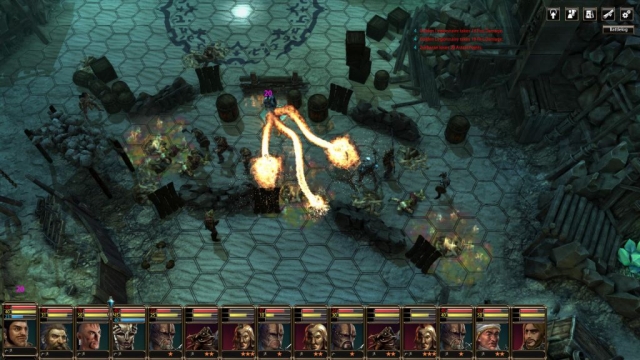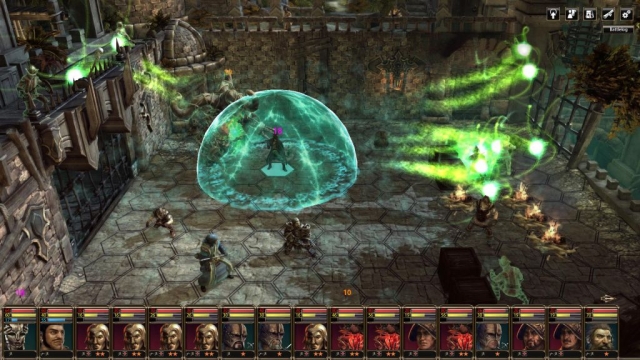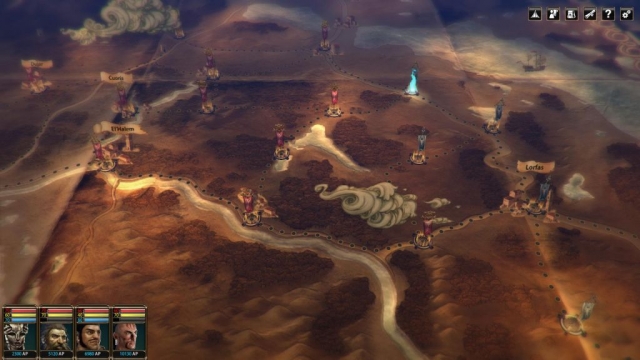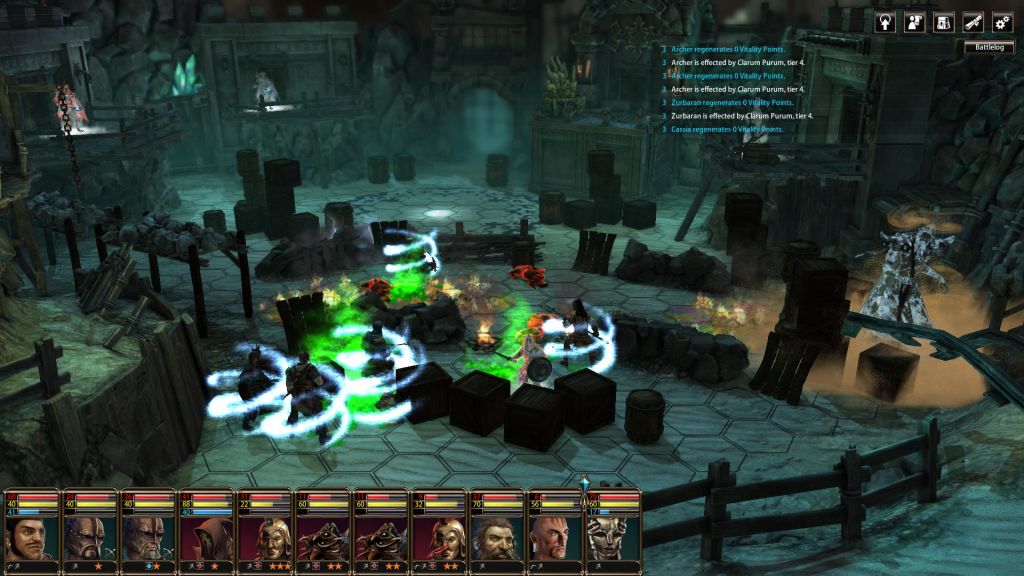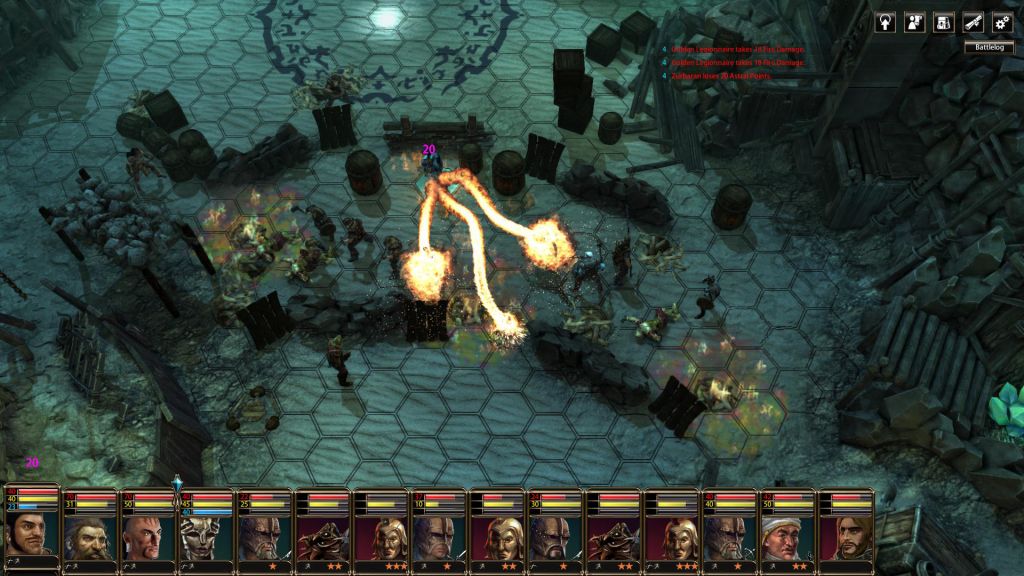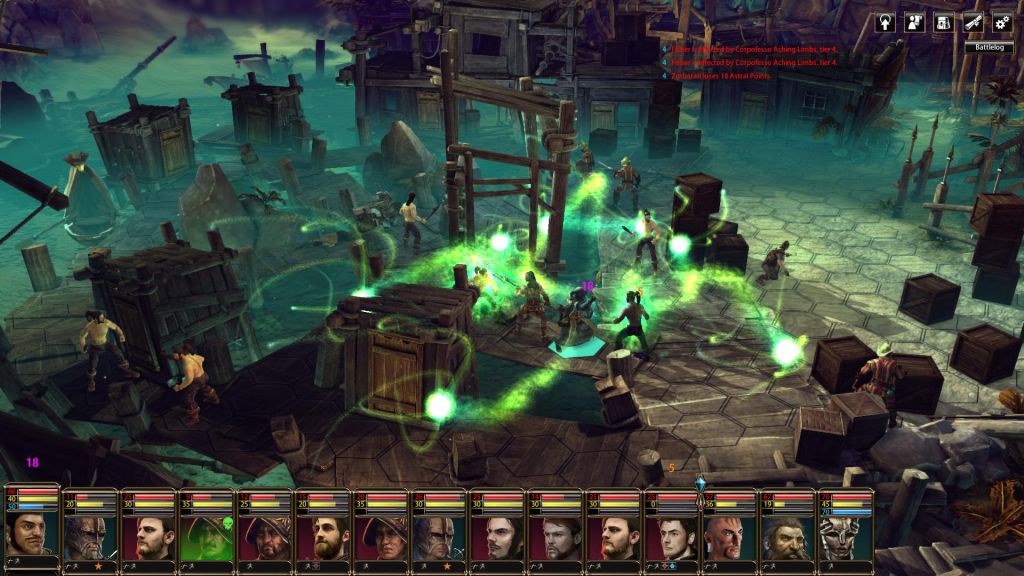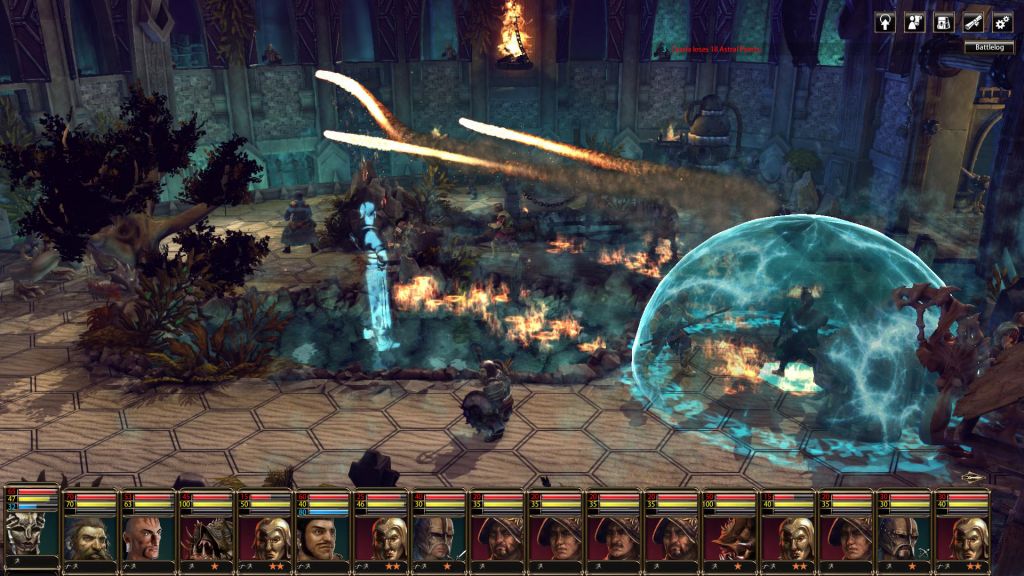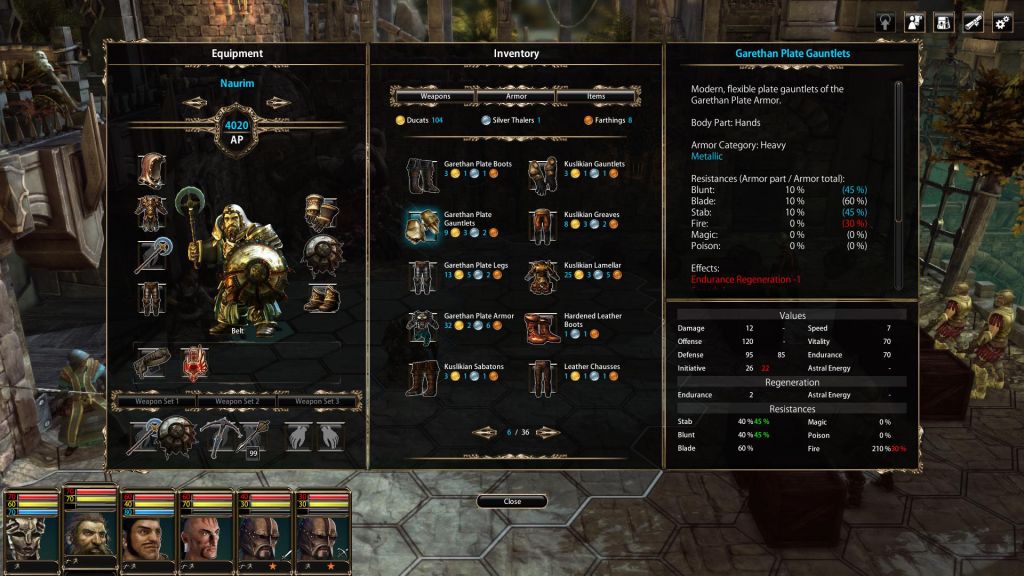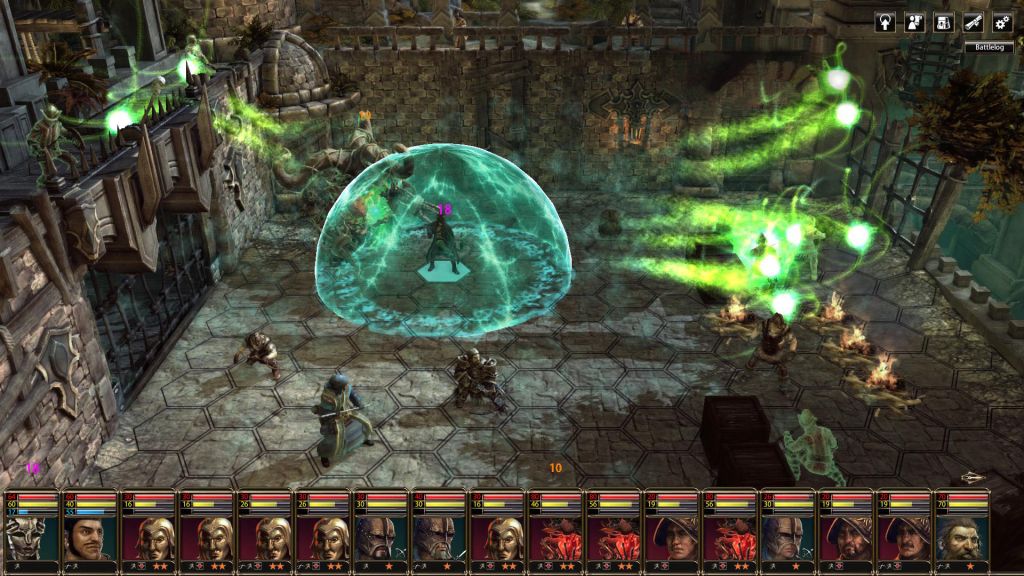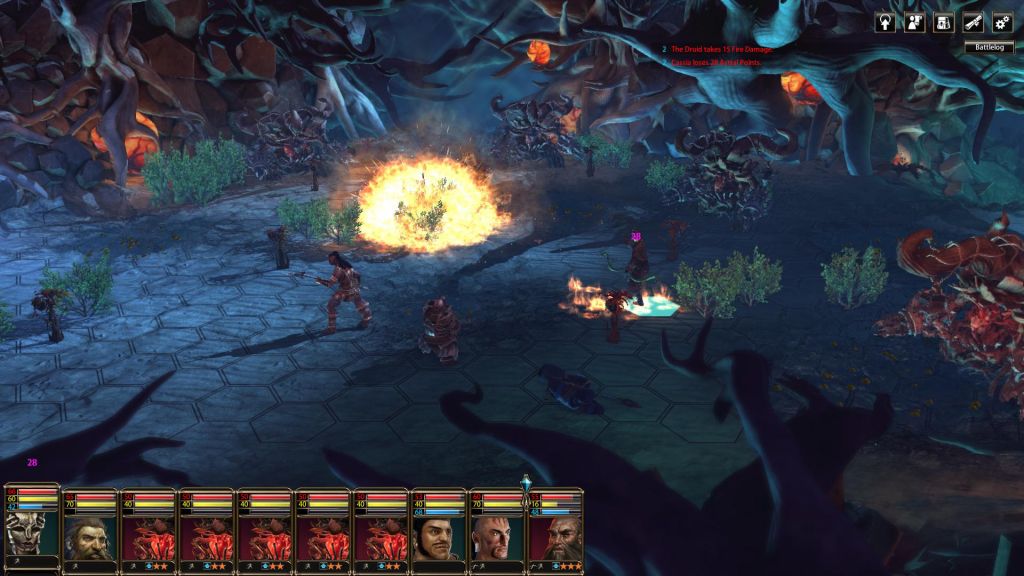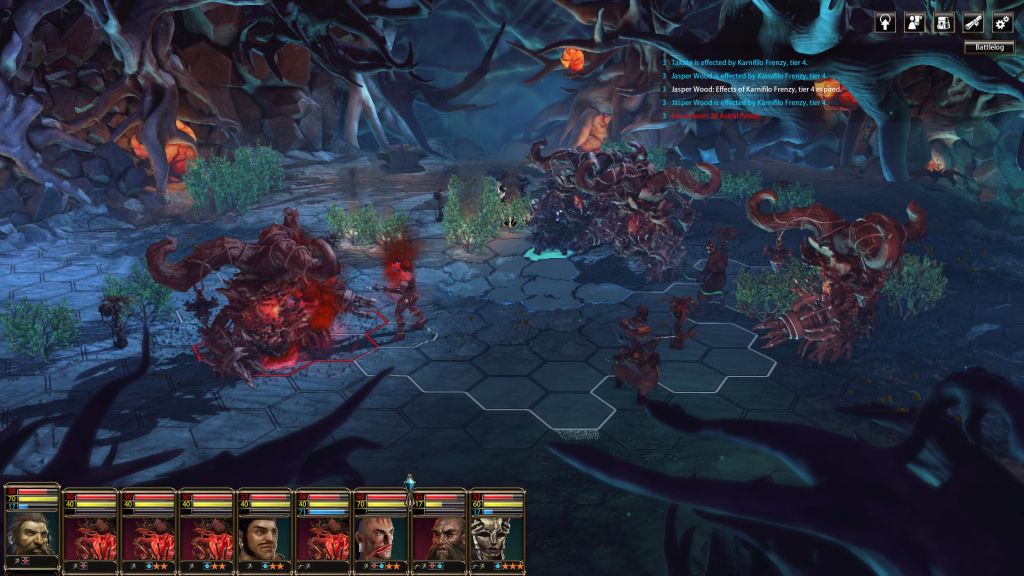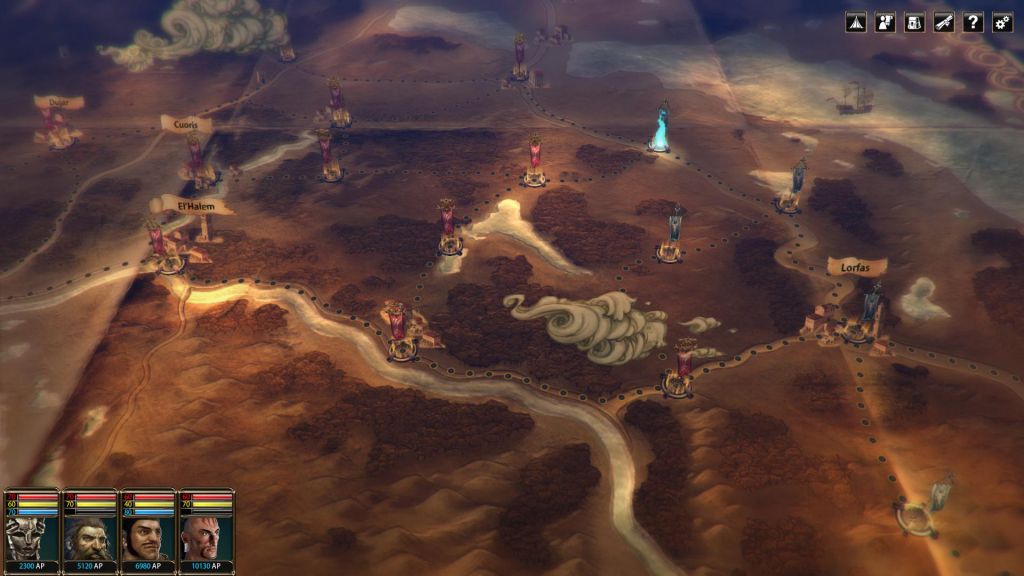Blackguards 2
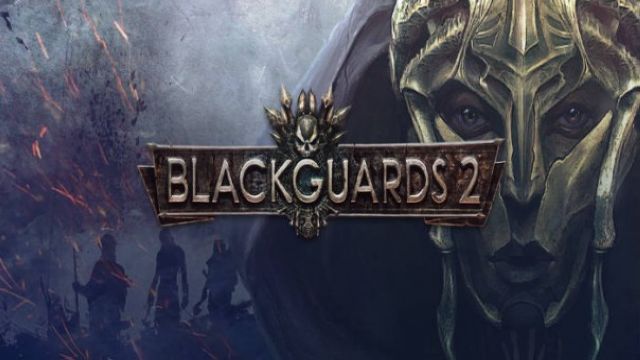
The Good: Lots and lots of character upgrades.
The Bad: Cost/benefit of many upgrades is a little out of whack.
The Ugly: Enemy AI has problems with some maps.
After playing Blackguards 2 for a couple of hours, I was all but ready to just turn in my review of Blackguard 1, append the number 2 everywhere and call it done. Blackguards 2 seemed in those first couple of hours to be, not just a similar game to Blackguards 1, but the same game. Sure, there was a new plotline, but within half an hour I had assembled the old adventuring crew of Naurim the dwarf, Takate the spear-wielding savage and Zurbaran the mage, and it was like I had never stopped playing Blackguards 1. In a way this was not particularly surprising to me – Blackguards 1 came out less than a year ago, so how much change could they have really worked into the new game? In another way, it was curious to me that the game I was playing was being released as a whole new game and not just DLC to the original. Then around hour three, a whole new portion of the game opened up and it became something very different. Better? Worse? That’s difficult to decide. How about I start by describing it all and go from there?
Blackguards (1 & 2) is a tactical RPG. You have characters in your party, spend experience to upgrade them, and gather quests and intelligence by speaking with other characters using a menu-driven dialog system. The world map consists of a number of spots you can visit – cities, towns, dungeons, caves, shrines. At those locations you frequently find yourself in combat, and that’s where the bulk of the game is spent. Combat transitions you to an isometric map of the location. These maps are like little set pieces with plenty of things you can interact with. A toppled stack of boxes becomes cover. You can attack the chain holding a chandelier and drop it on your enemies (or your friends if you don’t plan too well). There are barrels that explode and levels to pull and wild animals that can be released and all sorts of mischief that can go on. I’ll add here that the enemy AI has serious problems with many of the maps, getting snagged up on features, man after man running over the exact same traps without any sort of learning, and it can get a lot worse if your mage casts spectral walls blocking certain routes. On one map I had the enemy foot soldiers literally running in circles; despite the fact that there were several clear paths between my forces and theirs, they were unable to figure it out, and my archers and mages picked them to pieces with ease. One more note on the maps: you can adjust the isometric angle from a pretty steep slant to a direct overhead view, but you can’t rotate the map or zoom in or out, and those are pretty serious shortcomings.
Prior to combat you are given the opportunity to position your units in certain places on the map, and once you are ready, combat begins. Combat is turn-based, units going in order based upon their individual initiative scores, just like the old D&D for those of you who played those like I did. Each unit on its turn has a number of action points to spend, and the options you have there are truly vast. Move, cast spells, attack, switch weapons, assume a defensive posture, use a potion, set a trap, disarm a trap, and on and on and on. There are some odd wrinkles to actions, like an attack of any kind always ends that units turn – so while you can move some distance and attack, you can’t attack and then move at all. Odd. Anyway, all of these options are performed from an action wheel that appears around the character on their turn. The wheel is split into segments – attack, defend, spells, items, use, end turn, etc. If you select something like casting a spell, that piece of the wheel further extends to show the spells you can cast, and beyond that the levels of spell that are available. There are dozens of spells possible and all these submenus can become quite onerous. On their turn a character can also choose to wait and spend their remaining action points after all other characters have gone in that turn. There is no way to save unused action points for the next turn (or go into Overwatch for XCOM fans).
Combat ends when either all the members of your party or all the enemies are incapacitated. You collect experience and loot and are dropped back to the world map to pick a new destination. This is the place where Blackguards 1 and 2 deviate.
Firstly, experience points can be used for upgrades whenever – this is true in both games – but Blackguards 1 you could only upgrade with an instructor, and part of the challenge was finding the guy who could teach you, say, a new spell or a new weapon. Not every teacher could teach you everything. In Blackguards 2 you have a roving camp, and staying at the camp is a group of instructors who know everything. You can go to the camp at any time you like (except during combat), so much of the strategy of when to upgrade and how far you might have to travel to do so has been taken out. Though like Blackguards 1, Blackguards 2 does provide you with an incredible array of upgrade options. Dozens of attack styles, numerous weapons, easily fifty different spells, eight or ten different lore types that your character can study, plus you can upgrade base stats like vitality, endurance, and mana – there are nowhere near enough experience points to allow your characters to experience even a significant fraction of the upgrades. I’ll add that the upgrade balance seems off somewhat in that some upgrades are very cheap and very powerful while others cost a great deal of experience points but don’t provide much benefit.
The second deviation between Blackguards 1 and 2, and this is really the biggy, is that the map in Blackguards 1 was just a way to keep track of locations and travel. The map in 2 is sort of like Risk and represents a power struggle going on between your party and the king of the land. You’re free to travel around cities you hold, but moving into enemy territory can only be done through a path from a city you hold, and you’re guaranteed combat when you get there. You can hover the cursor over an enemy city and get some idea of how strong the enemy force waiting for you there is. In Blackguards 1 the only way to heal up between combat is to camp, and camping cost rations. The roving camp of Blackguards 2 requires no food.
So you can heal up in this roving camp, and talk with and gather intel from other characters staying in your camp. There are some side quests, but they don’t seem to open up new locations on the world map as they did in Blackguards 1. They instead seem to alter what happens in certain enemy cities. Side quests are, at least in my 15 or so hours of playing, pretty sparse. The game is primarily about taking all the king’s cities and becoming ruler of the land. Though no one would have accused Blackguards 1 of being an open-world RPG, the structure of the Risk map and the ability to attack only places adjacent to those you already hold makes it seem particularly adventuring on the rails. The only thing standing in the way of your slow, methodical conquering is that the king occasionally counterattacking at a place you’ve taken from him. These are a neat spin in that the defensive structures held by the king’s forces when you attacked are now yours, and it is the king’s forces trying to come in. Though it never happened to me, I suspect that if you ended up trading a particular city back and forth, that map could get tiring.
The third deviation, and this is also a biggy, is that you have a mercenary force working with you. When you head into combat, you are given a number of empty slots that you can fill with mercenary archers and sword or spear fighters or mages. These extra people on your side really come in handy sometimes. Capturing certain cities provides improvements and benefits to these mercenaries, and that’s a cool mechanic. It almost feels like they intended a multiplayer risk-style game to arise out of this piece of the game, but if they did, it didn’t make the released version. Blackguards 2 has no multiplayer element.
If you were tired of Zurbaran’s smarmy dialog or of hearing Naurim say “Pah! Poison!” in combat a hundred times (and I was), Blackguards 2 is more of that. A lot more of that. Blackguards 2 is in many ways a game that compares more closely to XCOM than other RPGs. XCOM also had a limited number of maps to fight on – if you’ve fought aliens in one forest, you fought in them all – but the XCOM maps were larger which allowed for a greater variety of strategies to be employed. The maps of Blackguard are claustrophobic by comparison and have no fog of war. Finally, while your characters have some latitude in effecting the world – you can choose to kill or spare this or that character, or attack this city or attack that one – I didn’t really get the impression that I was branching out the flow of the adventure much with my choices. Many modern RPGs have significant branching effects that are determined by the player’s choices; while I may have missed it, I didn’t see that here. I can’t help but feel like this Risk-style questing is far more limiting than the open-ish world of Blackguards 1.
Reviewed By: Phil Soletsky
Publisher: Daedalic Entertainment
Rating: 70%
——————————————————————————–
This review is based on a digital copy of Blackguards 2 for the PC provided by Daedalic Entertainment.
 Game Over Online
Game Over Online